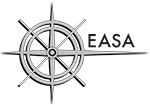Early Assessment and Support Alliance
Toolkit for EASA Teams: Community Education for Medical Providers
This toolkit is for EASA county program teams to use when planning outreach to medical providers. It compiles tips based on the experience of EASA teams across Oregon.
EASA
1. Find Medical Provider Contacts
Don’t get discouraged. Medical providers are really busy and this can be a challenging task, but it’s important. Take that first step and build from there.
How to find contacts
- If you have medical providers within your own System of Care, start there
- Ask EASA participants–new, current and alumni–to help identify medical providers to reach out to. If the young person was referred, who made the referral? Who told them about EASA? Who didn’t?
- Take the opportunity to go to appointments with EASA participants and their medical providers if the young person desires
- Target clinics where outreach efforts can contact multiple providers together
- Find practices that have a behavioral health program
- Check online lists of providers from websites for the insurance companies used most often in area
Whom to contact
- Identify the person, such as the office manager, who can get information to the clinic’s physicians and/or schedule group presentations in staff meetings or brown bag lunches
- Ask if there are other practitioners or groups that could benefit from hearing from us
- Reach out to behaviorists in clinics. In emergency rooms, contact psychiatric social workers.
- Create an ally within a clinic who will champion the EASA cause.
EASA
2. Reach out. Introduce them to EASA!
Strategies
- Reach out multiple times using different types of outreach as needed
- Aim for a meeting, even if it’s a short one
- Offer a consultation
Initial Contact
- Contact by email, postal mail or dropping off materials. Which method to use will differ by location. For example, in a small community where clinics are known, dropping off information could work well. In larger communities, that may not be feasible and email or mail may be best.
- Include a leave-behind (paper or digital) such as an EASA brochure or business card that includes your county website and easacommunity.org URL. Use the templates–including a suggested introductory letter/email, brochure and 5 x 7 psychosis screening note card–linked in the sidebar.
Follow-up
- Most likely by phone. Follow-up could be to make sure you have the right contact info, confirm they got the information, invite them to an education event coming up, ask to present at a staff meeting or brown-bag lunch, ask the best way to proceed to get more information to their staff
- Send additional information. For example, for the first contact send the intro letter and brochure. Send the 5 x 7 card in a follow-up.
EASA
3. Offer educational opportunities
- Have an EASA medical staff present- for example, Psychiatrist, Nurse, Psych Nurse. Medical providers like to hear from other medical providers.
- Do a swap – ie., “If you give me 15 minutes to talk about EASA, I’ll listen to 15 minutes about your program.””
- Use the education presentation templates developed by the Center for Excellence as a basis and modify based on your county’s program
- Learn about your particular audience in advance and tailor your presentation to what is important to them
- Grand Rounds or other education forums sponsored by local hospitals for medical providers. Collaborate with the EASA Center for Excellence or local providers to offer CMEs.
- County health programs
- Brown bag lunches or staff meetings on-site at local medical providers offices. Emergency room teams may have staff meetings as well.
- Webinars live or recordedIdeas for Educational Venues:
-
Tip: When you go to a medical provider’s location to meet, you don’t always know the setting. It could be in a meeting room with a monitor for sharing your screen or be an informal conversation around a table. Be flexible. Be prepared for a short or long presentation or to sit and chat. Print out your talk for your reference to be sure you include your main points or if you need to calm those jitters. Leave information behind and ask them to call to consult.
EASA
4. Maintain the Relationships
- Contact them when new information is available, ie., articles or studies come out, new content on the website germane to them, an updated brochure.
- Send an invitation when you’re presenting somewhere, ie., brown bag lunch, grand round, training or when a new webinar is available.
- Do an annual check-in email or mailing. Reference the date you last connected. Check to see if they need more brochures, business cards, would like you to come back to meet, etc.
- When an EASA participant graduates, do a warm hand-off to their Medical Provider.
- If you have staffing, provide a liaison to the clinic and offer to attend team meetings, have consultation hours and to help navigate the system.
